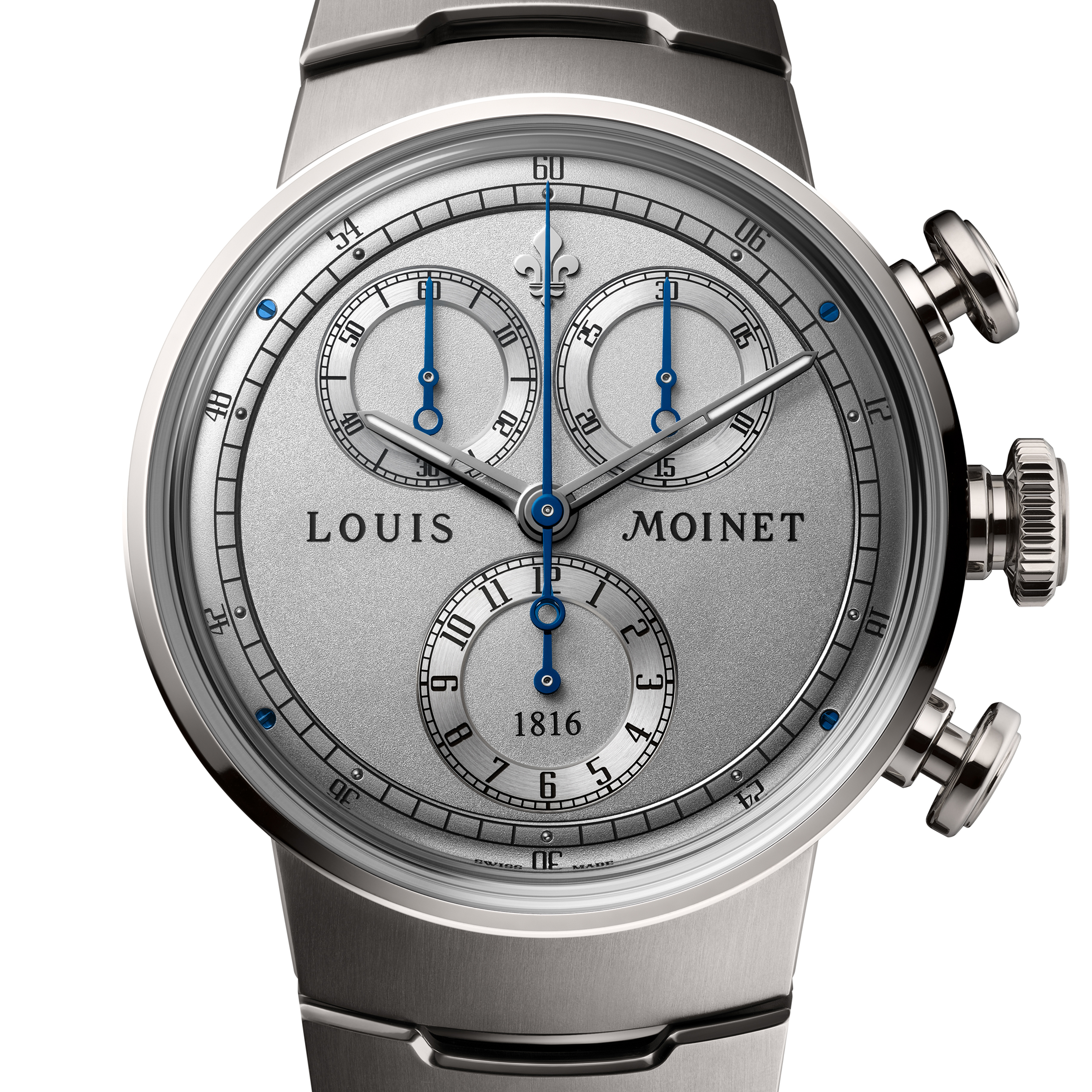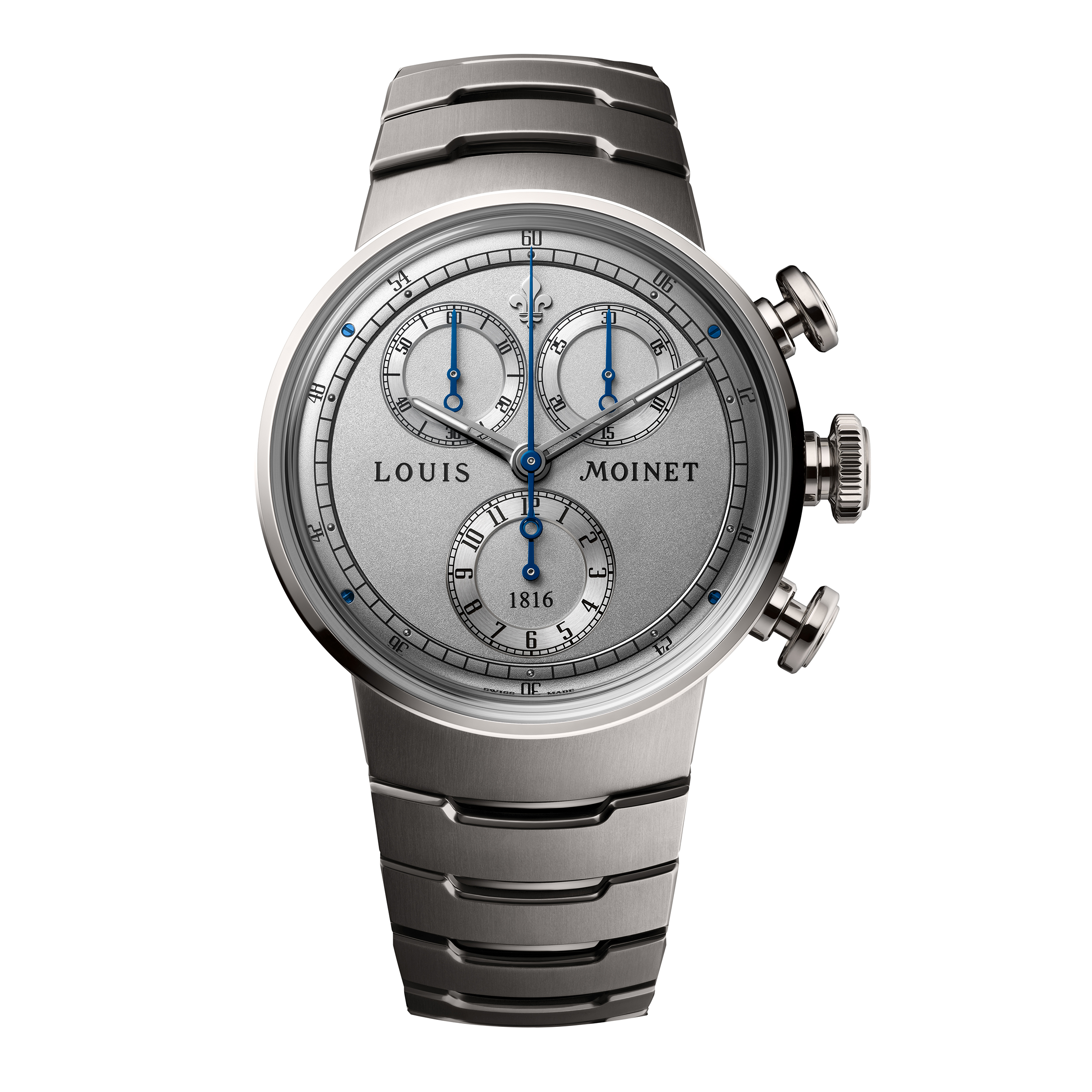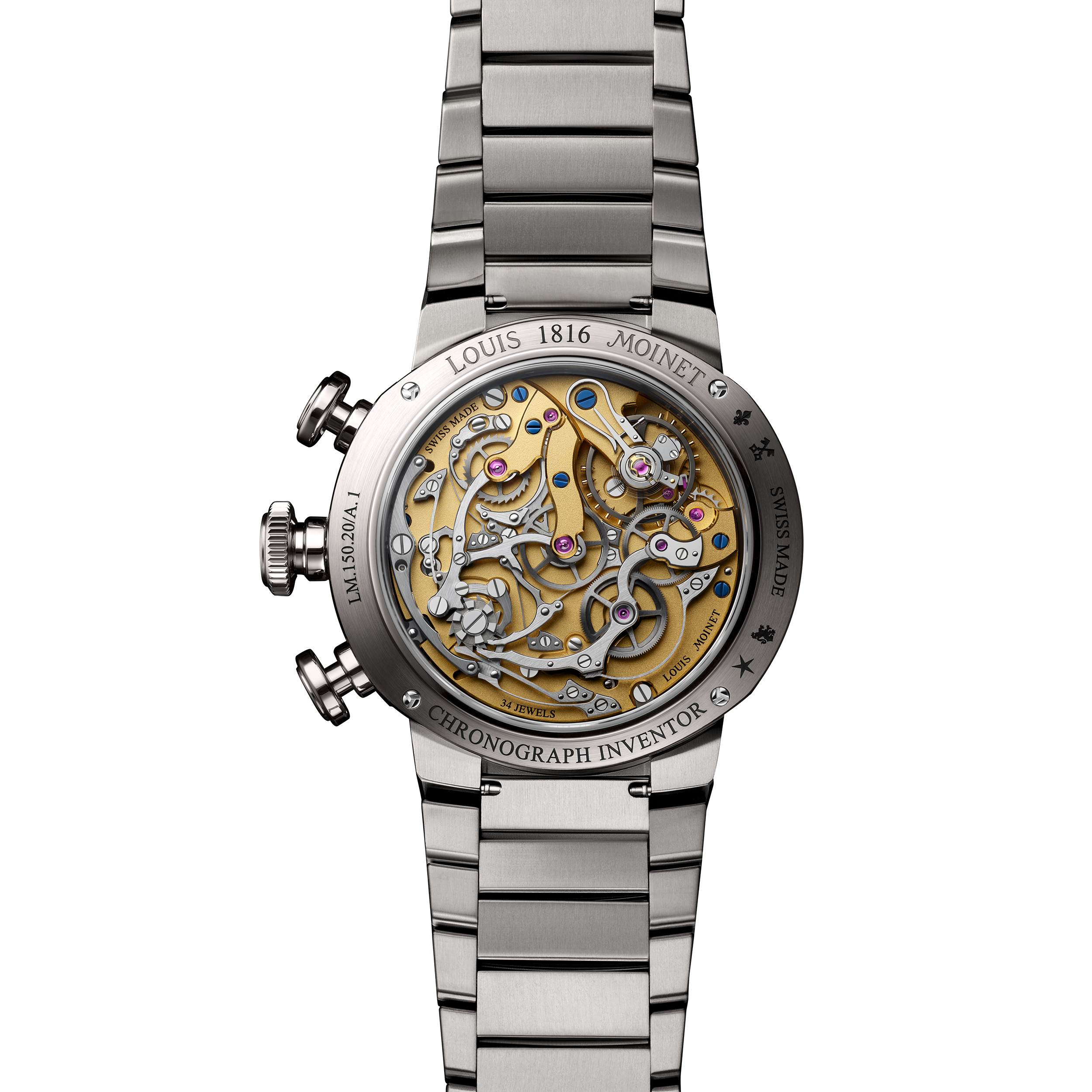
1816
Power reserve: 48 h, 28800 vph
Jumping minute counter
1816 was one of the great turning points in watchmaking history. It is the year in which the great watchmaker Louis Moinet completed the world's first chronograph.
Today, a new timepiece, the 1816, shines the spotlight onto the legacy of this masterpiece. This timepiece remains true to its original essence and is now ready to write the next chapter in its history.
Reinventing heritage: The 1816 chronograph
A closer look at Louis Moinet’s new 1816 chronograph means taking a deep dive into over 200 years of history through a timepiece exhibiting a resolutely contemporary style. The DNA of the original timepiece, which with its sober, functional, and, for its time, avant-garde design, emerges in every detail. The aesthetic codes of the original model have been given a totally new interpretation but one that is always in keeping with the traditional codes of haute horlogerie.
The double-gadroon case, in polished and satin-finished grade 5 titanium, measures 40.6 mm in diameter and is composed of 51 parts. It retains its original Directoire style semi-bassine design with a flat case middle. Two ascetic push-pieces frame the winding crown, which is decorated with the fleur-de-lys, the emblem of Bourges, Louis Moinet's birthplace.
The grade 5 titanium bracelet integrated into the case is the very first metallic bracelet developed by the Ateliers Louis Moinet. It was named “Project BRIDGE” for the elegant, curvilinear shape of its wide links. The latter are emphasised by a satin and polished finish, creating a sculptural whole that is both fluid and ergonomic.
Louis moinet’s avant-garde vision and the 1816 dial
The entire dial is composed of twenty-three elements, ten blackened nickel cabochons. The dial is both legible and functional. The chronograph hand is very visible and is accompanied by two totalizers — one for the hours, the other for minutes — along with a small seconds subdial. The latter and the 30-minute instantaneous totaliser, arranged horizontally on the top half of the dial on either side of the stationary central chronograph hand, overlook the 12-hour totaliser. The composition is well balanced, with each counter featuring a satin-brushed so-called annular dial with Arabic numerals.
The whole is surrounded by a minute and seconds chapter divided in increments of six, recalling the original sixtieths of a second indication. The slightly vaulted flange - mounted onto the watch, true to the original, with four blued-steel screws – the centre of the totalisers and the dial plate have been bead-blasted.
Engraving has made it possible to precisely inscribe the dial markings, the name of the timepiece – 1816 -- and the name Louis Moinet, reproduced in the typography of the original creation.
The central chronograph hand, along with the counters’ hands, are out of blued steel. The hours and minutes are indicated by Louis Moinet-style openworked hands, with tips coated with SLN. Excellent readability is ensured thanks to the sharp contrast with the rhodium dial serving as a backdrop.
The final touch is the fleur-de-lys logo at twelve o'clock. It pays homage to the city of Bourges, where Louis Moinet was born in 1768.
A new in-house, traditionally conceived calibre for the 1816
The challenge when designing the 1816 was to preserve the quintessence of the original chronograph while integrating a movement that could meet all haute horlogerie standards. This entailed designing a fully integrated calibre, conceived from scratch.
The calibre is composed of 330 parts including 34 jewels. It beats at 28,800 vibrations per hour. It was developed exclusively for the 1816 chronograph so as to preserve the DNA of the “thirds counter,” the compteur de tierces, while adding a contemporary touch.
The absence of a plate on the back reveals the grand interplay of shaped parts, overlapping planes and bridges, concatenated cogs, and chronometric controls. The contrasts are striking: the white of the steel, the satin finish and brassy hue of the bridges, the blue of the fixing screws, and the deep red of the rubies.
Watch connoisseurs wishing to have a physical connection with their timepiece will appreciate the manual winding ritual, which will ensure 48 hours of autonomy. Connoisseurs will appreciate the instantaneous minute counter, the column wheel control, and the swan-neck regulator, all witnesses to the authenticity, care and quality of the movement.



